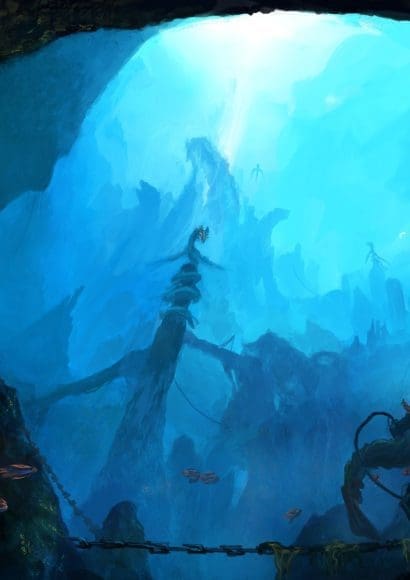
The enigmatic world of the Abyssal Depths beckons, a place where the sun’s rays never penetrate and mysteries abound. In this article, we will embark on a journey into the heart of the ocean, a realm known as the Abyssal Depths. These deep-sea environments, with their extreme pressures, frigid temperatures, and utter darkness, are home to some of the most unique and awe-inspiring life forms on Earth.
Join us as we dive into the depths to unravel the secrets of this fascinating and mysterious world, exploring the wonders hidden in the inky blackness, and discovering the critical role it plays in our understanding of the planet’s geology, biodiversity, and climate.
Contents
Abyssal Depths – What Are They?🐟
Hey there, young explorers! Today, we’re taking a plunge into the mysterious world of the Abyssal Depths. So, what exactly are these abyssal depths, and why are they so cool? Well, let’s dive in and discover the secrets of these incredible underwater realms.
What Are Abyssal Depths?
Abyssal depths are like the Earth’s hidden treasure chests at the bottom of the ocean. They’re super deep areas, way below the sunlight’s reach. Imagine a place where it’s darker than a moonless night, colder than your freezer, and where the water pressure could squash you like a pancake. That’s the abyssal depths for you!
How Deep Are They and Where Are They Located?
These depths are incredibly deep. We’re talking about 13,000 to 20,000 feet (4,000 to 6,000 meters) below the ocean’s surface! That’s like stacking several skyscrapers on top of each other.
Abyssal depths aren’t just found in one spot; they’re scattered all around the world’s oceans. You can find them in the Atlantic, Pacific, Indian, and Arctic Oceans. They cover huge areas, making them like secret worlds beneath the waves.
Extreme Conditions Down There
Now, let’s talk about why these abyssal depths are so unique. It’s because they’re home to some of the world’s most extreme conditions.
Total Darkness
In the abyssal depths, it’s like someone turned off the lights and threw away the switch. There’s absolutely no sunlight down there. It’s like trying to see in a pitch-black room.
Mind-Boggling Pressure
Have you ever felt the weight of water when you dive deep in a pool? Now imagine that pressure, but it keeps increasing the deeper you go. It’s like having a mountain of water pressing down on you from all sides. Creatures down there need special adaptations to survive this crushing force.
Freezing Temperatures
It’s not just dark and pressurized; it’s also freezing cold. We’re talking about temperatures that can go as low as -40°F (-40°C). Brrr! That’s colder than the inside of your freezer.
So, there you have it! Abyssal depths are these mind-blowing, super deep, and mysterious places in the ocean. They’re dark, super pressurized, and icy cold. But guess what? These extreme conditions are what make these abyssal depths such a hot spot for discovering incredible creatures. We’ll dive into that in the next section when we ask, “What creatures inhabit abyssal depths?” Stay tuned for more underwater adventures!
Life in the Abyssal Depths🐟
Hey, curious minds! In this part of our deep-sea adventure, we’re going to dive into the incredible world of life that calls the abyssal depths their home. We’ll be exploring how these amazing creatures survive in the inky blackness, the bone-crushing pressure, and the chilling cold of the abyssal depths. So, let’s not waste any time and dive right in!
How Do Organisms Survive in the Abyssal Zone?
The abyssal depths may sound like a spooky place, but it’s also a realm full of astonishing life. You might be wondering, “How on Earth can anything live there?” Well, Mother Nature has a few tricks up her sleeve.
Creatures of the Deep Sea
Picture this: you’re a fish, but not just any fish – you’re a special fish that’s perfectly suited for the cowl of the abyssal depths. These fish have evolved in incredible ways to thrive in this extreme environment.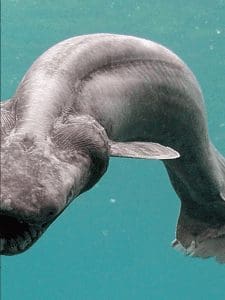
Some abyssal fish have gigantic mouths and stomachs to gulp down anything edible that drifts by. Others have developed super-sensitive eyes that can spot the faintest glow in the dark, which helps them find prey. These adaptations help them survive in a place where finding food is like hunting for treasure in the dark.
Incredible Invertebrates
But it’s not just fish that call the abyssal depths their home. Invertebrates, which are animals without a backbone, are also in on the action. Take the deep-sea squids, for example. They’ve got light-producing organs that can create their own party lights in the darkness. Imagine having a built-in flashlight to find your way around!
Microscopic Marvels
Now, let’s not forget about the tiniest residents of the abyssal zone. Microorganisms, like bacteria and tiny plankton, may be small, but they play a huge role in the food web down there. Some of these little guys can even use chemicals to survive in a place where there’s no sunlight for photosynthesis.
Discoveries and Exploration🐟
Hey there, young adventurers! In this part of our journey into the abyssal depths, we’re going to dive into the thrilling world of discoveries and exploration. We’ll chat about how scientists and explorers have uncovered the secrets of this deep-sea wonderland and what makes the abyssal ecosystem tick.
What is the Abyssal Ecosystem Like?
Before we dive into the cool discoveries, let’s set the stage. Imagine the ocean, the world’s biggest playground, and then imagine that part of it is this incredible, hidden world known as the abyssal depths. It’s like Earth’s very own secret basement.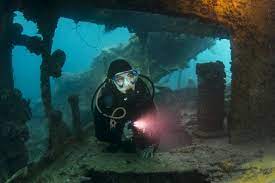
Now, let’s talk about the high-tech tools that help us explore this mysterious place.
Ocean Exploration Tech
So, how do we get a peek into this hidden world? Well, it’s thanks to some amazing gadgets and technology. Scientists use things like remote-controlled submarines and deep-sea robots to go where no human can. These nifty machines dive deep into the ocean, carrying cameras and sensors to capture the abyssal depths’ secrets.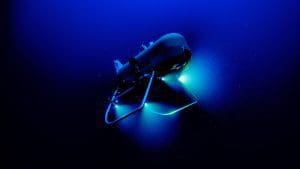
Notable Missions and Discoveries
One of the coolest parts of exploring the abyssal depths is all the exciting missions and discoveries. Imagine uncovering ancient shipwrecks or finding creatures no one’s ever seen before!
For example, during a mission, scientists found a shipwreck from a loooong time ago, giving us a glimpse into history. And guess what? These deep-sea areas are like treasure troves for scientists. They’ve found bizarre and unknown species down there, creatures that almost seem alien.
Geological Wonders
But it’s not just about living things. The abyssal depths also hold geological wonders. There are mysterious underwater mountains and volcanoes, some of which are active. It’s like a whole other world beneath the waves.
The Role of Abyssal Depths in Science🐟
Hello, inquisitive minds! In this part of our deep-sea adventure, we’re going to explore the crucial role that abyssal depths play in the world of science. You see, these mysterious underwater realms are not just interesting; they’re also essential for understanding some big topics like climate change, geology, and marine biodiversity.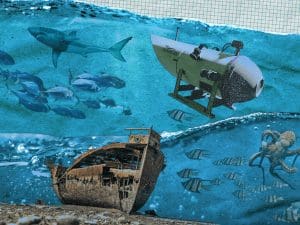
Understanding Climate Change
First things first, let’s talk about climate change. Now, climate change is all about the Earth’s temperature, weather, and the planet getting warmer. But how do abyssal depths fit into this puzzle?
Well, these deep-sea areas are like the planet’s secret record keepers. They trap carbon, which is like the Earth’s pollution, and store it in the deep ocean. It’s like a giant recycling bin for carbon! This helps keep our planet in balance. Scientists study the abyssal depths to learn more about this carbon cycle and how it affects our climate.
Unraveling Geological Mysteries
Geology is like Earth’s history book. It tells us how our planet formed and what happened over millions of years. The abyssal depths hold some of the best clues about Earth’s past.
The ocean floor in the abyssal depths has rocks and sediments that can tell scientists about ancient climates, earthquakes, and even how the continents moved. It’s like looking at a jigsaw puzzle of Earth’s history, and the abyssal depths have some of the most important pieces.
Marine Biodiversity Hub
Imagine you’re a scientist studying animals, and you find a place with a lot of different species to learn from. That’s what the abyssal depths are like for marine biologists. It’s a treasure trove of unique and strange creatures that can teach us so much about life in the ocean.

These regions also help us understand how different species are connected and how they adapt to extreme conditions. The knowledge we gain from studying the abyssal depths helps us protect marine life and make sure our oceans stay healthy.
Preserving the Environment
It’s not just about learning; it’s also about taking care of our planet. The abyssal depths teach us why it’s crucial to keep our oceans clean and safe for all creatures, big and small. By preserving these deep-sea environments, we’re doing our part to protect the Earth and all its inhabitants.
Challenges and Threats🐟
Hey, inquisitive minds! As we journey deeper into the abyssal depths, it’s essential to understand the challenges and threats these mysterious underwater worlds face. Just like any other cool place, abyssal depths have their fair share of problems, and it’s important to tackle them to keep these regions safe and sound.
Environmental Challenges
One of the big challenges facing abyssal depths is pollution. Imagine if your room was full of trash and had no one to clean it up. The same thing can happen in the abyssal depths. Pollution from things like oil spills and plastic waste can harm the creatures living down there.
The ocean is like a big interconnected web. What happens in one part can affect the whole thing. So, it’s essential to keep the oceans clean to protect all marine life, including the weird and wonderful creatures of the abyssal depths.
Resource Exploitation
Now, let’s talk about resource exploitation. This is like when someone takes too many candies from the candy jar without thinking about sharing. In the abyssal depths, people are sometimes tempted to take too many natural resources.
These areas have valuable minerals and metals, and some companies want to dig them up. But it’s important to do this responsibly, without harming the environment. Like taking candy from the jar, but leaving some for later.
Conservation and Regulation
To protect these delicate areas, we need some rules, like playground rules that keep everyone safe. That’s where conservation and regulation come into play.
Conservation means taking care of the abyssal depths, just like we take care of our favorite toys. It’s about making sure we don’t harm the environment and the creatures that live there.
Regulation means having laws and guidelines in place. These rules make sure that everyone who explores or uses the abyssal depths does so in a way that doesn’t harm the ocean or its amazing residents.


